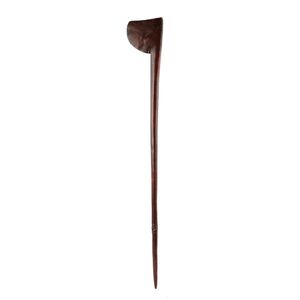Bvlgari Fish Pin with Lapis, Diamonds, and Ruby Eye
You must be a subscriber, and be logged in to view price and dealer details.
Subscribe Now to view actual auction price for this item
When you subscribe, you have the option of setting the currency in which to display prices to $Au, $US, $NZ or Stg.
- Pave Setting - Pave setting is a style of setting stones in jewellery where the small stones are placed close together in holes drilled in the metal, the burr of the metal around the stone being pressed over the edges to hold the stone in position.
- Cabochon Cut in Jewellery - A cabochon cut is a type of gemstone cutting where the stone is cut and polished in a convex shape with a flat bottom and a domed top, with no facets. This type of cut is typically used for opaque or translucent stones that have natural patterns or inclusions that are best displayed in this type of cut. Examples of stones that are often cut as cabochons include turquoise, opal, and moonstone.
- Brilliant Cut - In their naturally occuring state diamonds have little life or sparkle and for many centuries were simply cut in half and worn in amulets. Invented at the end of the 17th century by a Venetian diamond cutter, a "brilliant cut" diamond has 58 facets arranged in a regular geometric relationship, with 33 above the crown and 25 below on the pavilion.
The introduction of the brilliant cut increased the popularity of diamonds in jewellery as it was the first cut to reveal the fire of the diamond, with the light being internally reflected from one facet to another, and was superior to the previously used table cut and rose cut.Variants to the brilliant cut have emerged since the end of the 17th century, but the popularity of the original brilliant cut has continued to the present time, where it is still the most commonly found cut.
. - Lapis Lazuli - Lapis lazuli is a semi-precious deep blue coloured stone, sometimes with gold inclusions, that has been used for thousands of years for jewellery, decorative items and decoration.
It is mined in Afghanistan, Siberia, Chile, USA and Burma. The mines in north-eastern Afghanistan are the largest source of lapis lazuli, and have been operating for over 6,000 years.
They were the source of the stone for the ancient Egyptian, Greek and Roman civilsations.
This item has been included into following indexes:
Visually similar items

A brass and red and white coloured enamel Carrara marble floor lamp Italian, circa 1950, 174 cm high

Standard lamp, Louis Poulsen style, in the manner of the PH series, by Bluelight, white, height 133 cm

Early tewhatewha. Orthodox form with 'Axe' type head, stone tooled with a deep rich patina, a pierced hole for attachment of feathers and the shaft decorated with softly carved abstracted mania design. Length 126 cm. Width 16.5 cm.

Planet lamp Perforated metal, adjustable neck on metal base, Australia c 1970s, 149 cm high, 22 cm deep
